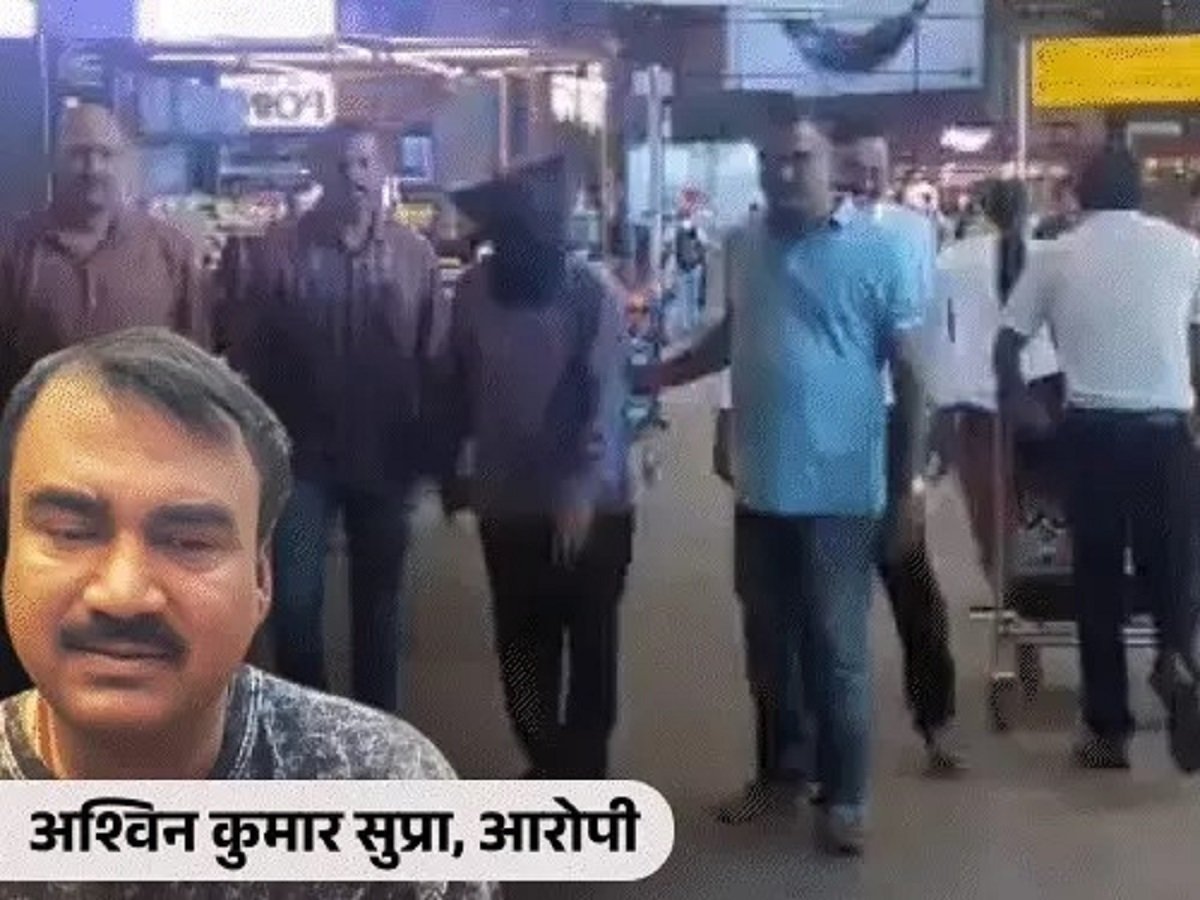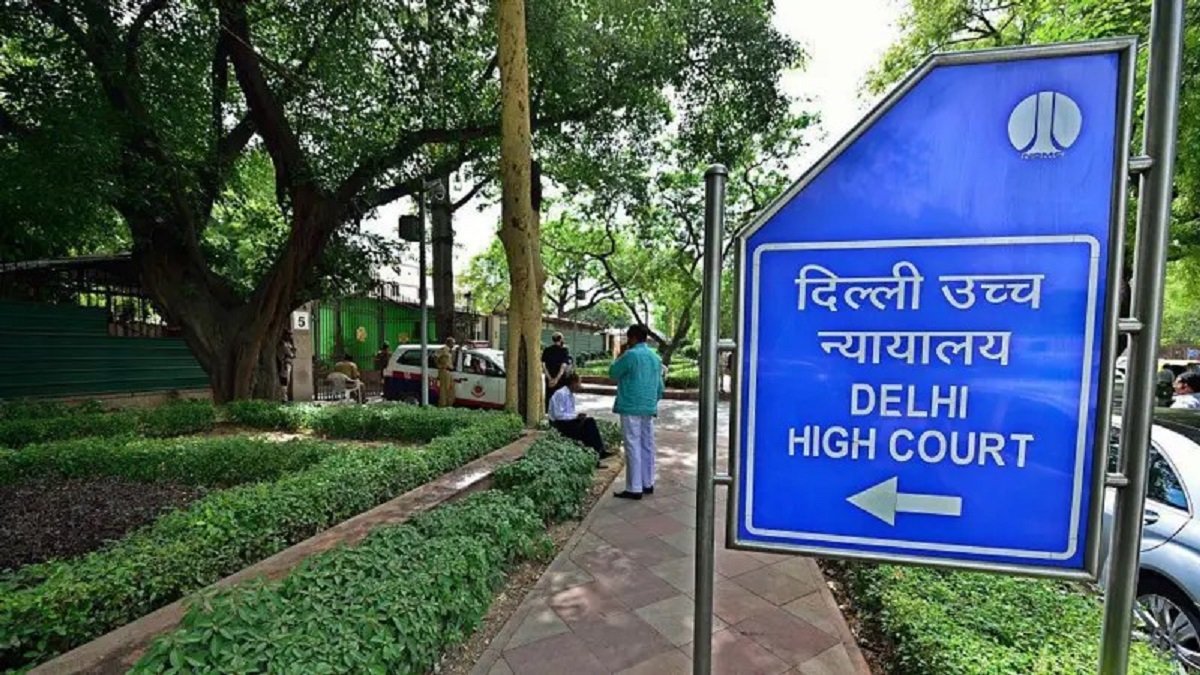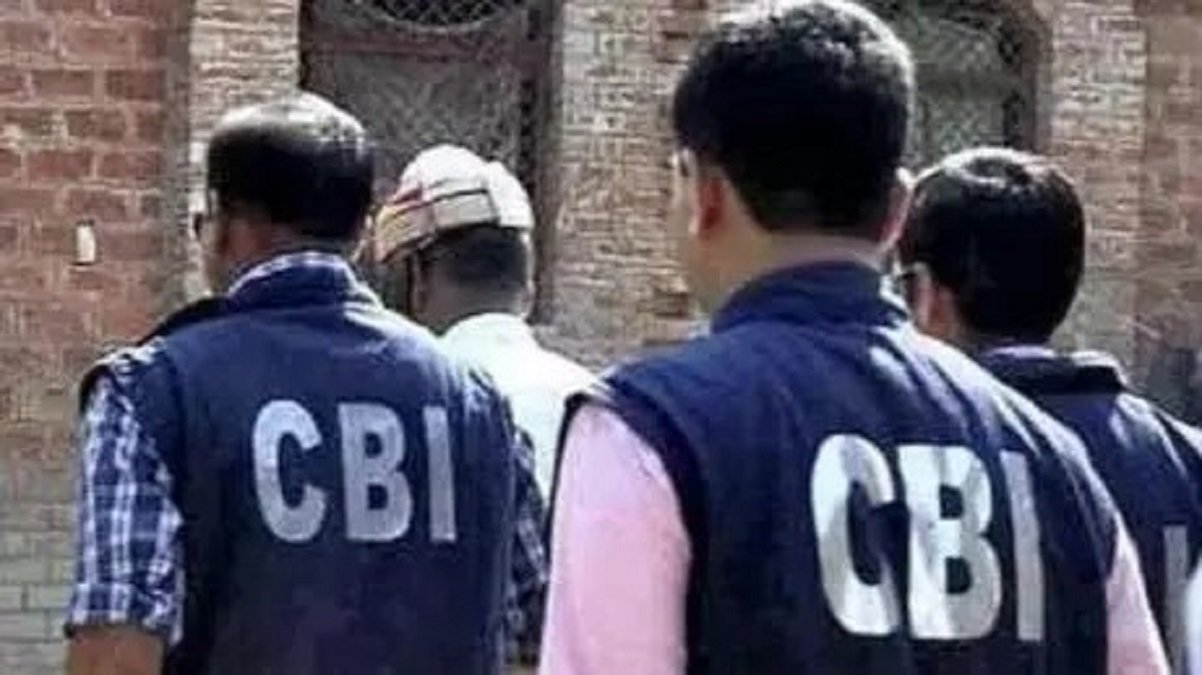Crime
Iran-Israel conflict: Iran Launches 180 Missiles at Israel; Middle East Conflict Escalates

Contents
Iran Launches 180 Missiles at Israel: Middle East Conflict Escalates
Israel, 19 October, 2024: Iran-Israel conflict took a new turn on the night of October 1st, 2024, the sky over Israel was lit not by fireworks, but by missiles launched from Iran. In an aggressive move, over 180 ballistic missiles were fired towards Israel under the direct orders of Iran’s Supreme Leader, Ayatollah Ali Khamenei. Iran’s Islamic Revolutionary Guard Corps (IRGC) confirmed that more than 90% of these missiles hit their targets. However, Israeli officials claimed their air defense systems intercepted most of the missiles, minimizing damage.

Missiles Target Key Israeli Locations
The attack inflicted visible destruction, with images showing deep craters across the country. One significant strike created a 30-foot deep crater outside the Mossad headquarters. The Negev Desert, home to a large Israeli military base, was also heavily targeted. Despite the scale of the attack, Israeli Prime Minister Benjamin Netanyahu stated that damage was limited but vowed to retaliate, declaring that “Iran has made a big mistake, and it will pay for it.”
Iran’s Growing Role in the Israel Conflict
This latest missile strike marks Iran’s direct involvement in the Israel-Hamas conflict, which has now spread to neighboring countries. Originally a conflict between Israel and Palestinian forces, particularly Hamas, the war has drawn in various paramilitary groups and now includes major players like Hezbollah, the Houthis, and Iran. Iran’s involvement signals a dangerous escalation that threatens to turn the regional conflict into a broader war in the Middle East.

Retaliation Looms Amid Escalating Tensions
Netanyahu’s strong words reflect Israel’s determination to respond decisively. “The regime in Iran does not understand our determination to defend ourselves,” Netanyahu warned. Israel’s retaliation could further deepen the conflict, pulling in more regional powers. The broader context includes tensions with Lebanon, where Hezbollah continues to launch attacks against Israel.
Israel air defense system: The Role of Iron Dome and Beyond
Israel’s renowned air defense system, the Iron Dome, played a critical role in countering this missile barrage. The Iron Dome intercepts short-range rockets, but with Iran situated 1,000 kilometers away, Israel relied on advanced systems like David Sling and the Arrow System to combat longer-range missiles. Despite these systems’ effectiveness, operating them is extremely costly. A single Iron Dome missile costs $50,000, while David Sling’s and Arrow’s interception costs range from $1 million to several million dollars per missile. Iran’s advanced ballistic missiles, including hypersonic missiles like the Fatah-2023, pose an ongoing threat.
A Series of Retaliations and High-Profile Assassinations
The missile attack comes in response to a series of Israeli airstrikes in Lebanon, where several high-ranking Hezbollah and Iranian leaders were assassinated in recent months. Iran’s response through missile strikes is seen as a direct retaliation for these targeted killings, as tensions continue to rise across the region.

International Reactions and the Threat of Broader Conflict
As the conflict escalates, international leaders are urging restraint. The United Nations Secretary-General António Guterres has called for immediate de-escalation, while countries like the United States and Saudi Arabia are monitoring the situation closely. Iran’s Foreign Ministry, meanwhile, stated that the missile strikes were an act of self-defense, warning Israel not to provoke further hostilities.
With both Israel and Iran locked in a dangerous cycle of retaliation, the Middle East stands on the edge of a potentially broader conflict. Although some media outlets have declared the onset of World War 3, experts caution that this remains a regional war for now. Still, with powerful non-state actors like Hezbollah and the Houthis involved, and Iran’s direct involvement, the stakes are higher than ever. Israel’s next moves will be critical in determining the future trajectory of this volatile situation.
Courtesy : https://www.youtube.com/@dhruvrathee/
Breaking News
UK Sikh Woman Rape Case – A brutal assault in Oldbury exposes racial violence in Britain-

Contents
Britain, Sep.13,2025:The UK Sikh Woman Rape Case has shocked Britain and sparked heated debates on racial violence, women’s safety, and the role of political leaders in condemning hate crimes. The case involves a 20-year-old Sikh woman in Oldbury, West Midlands, who was brutally assaulted and raped by two men. What makes the case even more disturbing is the racially charged remarks reportedly made by the attackers during the crime.
The horrific assault has united Sikh organizations, women’s rights activists, and human rights groups, demanding justice and accountability. Police are investigating the attack as a racially motivated hate crime, while Sikh leaders have slammed the political establishment for their silence and lack of immediate condemnation.
The Brutal Attack in Oldbury
According to West Midlands Police, the attack occurred on Tuesday morning around 8:30 AM near Temple Road, Oldbury.
- The victim, a 20-year-old Sikh woman, reported that two men assaulted and raped her.
- Eyewitness accounts and the victim’s testimony indicate that the attackers made racist comments during the assault, framing it as not just a sexual crime but also a hate-motivated attack.
- Emergency services were called, and the woman is currently receiving medical and psychological support.
Police have sealed the area, collected CCTV footage, and appealed for witnesses to step forward.
Racial Aspect of the Case
The racial dimension of the UK Sikh Woman Rape Case has intensified public anger. Victims of sexual assault already face trauma, but when the crime is fuelled by racial hatred, it exposes deeper cracks in Britain’s social fabric.
Police confirmed that the assailants used racist slurs during the attack. This shifts the narrative from an “isolated rape case” to a double crime—a sexual assault and a racially aggravated hate crime.
Sikh groups argue that such attacks reflect systemic failures in addressing racial prejudice and protecting minority communities in Britain.
Police Investigation and Response
West Midlands Police issued a strong statement:
- Chief Superintendent Kim Madill assured the public that specialist units are working on CCTV, forensic evidence, and local inquiries.
- The investigation is being treated as a priority hate crime case, meaning harsher charges may be filed once the perpetrators are arrested.
- Authorities have urged witnesses or anyone with information to come forward through confidential police hotlines.
While the investigation is ongoing, many community leaders argue that the slow political response undermines the seriousness of the case.
Sikh Community’s Strong Reaction
The Sikh Federation UK has been at the forefront of protests. Its senior leader, Dabinderjit Singh, condemned the attack:
- “This was a brutal, racist, and sexual attack in broad daylight on a busy road.”
- “We expect zero tolerance from all political parties on violent racist attacks.”
- “More than 48 hours later, we are still waiting for leaders across the political spectrum to publicly condemn this horrific assault.”
The Sikh Federation is demanding:
- Immediate justice and arrest of the perpetrators.
- Clear condemnation from UK government officials.
- Stricter enforcement of laws against hate crimes targeting minorities.
Political Silence and Public Anger
Perhaps the most disturbing aspect of the UK Sikh Woman Rape Case is the silence from British politicians. Despite the crime’s severity, leaders from major parties, including Labour and Conservatives, have not made strong public statements.
This silence has sparked outrage among Sikh organizations, who see it as a failure of leadership and moral responsibility. Community leaders argue that when minority women are victims, cases often receive delayed political attention, compared to other incidents.
Britain’s Troubling History with Racial Violence
The UK Sikh Woman Rape Case is not an isolated incident. Britain has a long and troubling history of racially motivated violence:
- 1980s & 1990s: Sikh and South Asian communities frequently reported racially charged assaults.
- 2018: Hate crimes in the UK surged after Brexit-related tensions.
- 2021: Reports showed Sikh men and women are disproportionately targeted for their appearance, especially those wearing turbans or traditional attire.
This latest attack in Oldbury reinforces fears that racism remains deeply entrenched in British society.
Role of Media in Reporting Hate Crimes
Another dimension of the UK Sikh Woman Rape Case is the way British media has covered it. Sikh organizations criticized mainstream outlets for downplaying the racial aspect and initially reporting it as a generic rape case.
Activists argue that underreporting hate crimes contributes to a culture of silence and impunity, discouraging victims from speaking out. Media responsibility in shaping public discourse is now under sharp scrutiny.
International Sikh Diaspora’s Concern
The Sikh diaspora, particularly in Canada, the U.S., and India, has expressed outrage and solidarity. Social media campaigns under hashtags like #JusticeForSikhWoman and #StopHateCrimesUK are trending, demanding immediate justice.
Sikh groups abroad are also urging the UK government to:
- Strengthen laws against racially aggravated sexual violence.
- Provide better protection for minority women.
- Ensure politicians are held accountable for silence on hate crimes.
Zero Tolerance on Hate Crimes
The UK Sikh Woman Rape Case highlights urgent reforms needed in Britain:
- Stronger Legal Protections – Laws against hate crimes must be enforced with tougher penalties.
- Political Accountability – Leaders must speak out swiftly and firmly against such attacks.
- Community Policing – Minority groups need direct channels to report threats without fear.
- Media Responsibility – Journalists must highlight racial aspects instead of burying them.
- Support for Victims – Holistic medical, psychological, and community support for survivors of racially motivated sexual assault.
The UK Sikh Woman Rape Case is a grim reminder that racial hatred and gender-based violence often intersect, leaving women from minority communities the most vulnerable.
As Sikh groups continue their protests, the silence of political leaders remains a stain on Britain’s democratic values. Unless strong action is taken—both legally and socially—such crimes will keep recurring.
Breaking News
Disha Patani House Firing case in Bareilly sparks controversy as her father alleges a conspiracy-

Contents
UP,Sep.13,2025:The attack happened in broad daylight, creating panic in the locality. Fortunately, no one was injured during the firing. However, the incident has raised serious questions about security-
The Shocking Disha Patani House Firing Case
The Disha Patani House Firing incident in Bareilly has taken Bollywood and the nation by storm. On Friday, two unidentified men riding a motorcycle allegedly fired shots outside the ancestral home of Bollywood actress Disha Patani. The attackers fled the scene immediately, leaving behind shock and fear in the neighbourhood.
While police have launched a high-level investigation, the actress’s father, retired Circle Officer Jagdish Patani, has made a sensational claim: he believes the incident may be part of a larger conspiracy.
What Happened in Bareilly
According to reports from ANI and other national outlets, two unidentified assailants fired multiple shots at the residence of Jagdish Patani in Bareilly, Uttar Pradesh.
The attack happened in broad daylight, creating panic in the locality. Fortunately, no one was injured during the firing. However, the incident has raised serious questions about security and the motive behind the act.
Official Police Statements on the Firing
Senior Superintendent of Police (SSP) Bareilly, Anurag Arya, confirmed the incident and assured that strict action would be taken.
“We received information that two men on a motorcycle opened fire outside the residence of retired CO Jagdish Patani, father of actress Disha Patani. For security, armed police personnel have been deployed. Five special teams under SP City and SP Crime have been formed for investigation. The culprits will not be spared,” Arya stated.
The case is now being handled at the highest level, with multiple teams tracing CCTV footage and eyewitness accounts.
Disha Patani’s Father Alleges Conspiracy
In a conversation with ANI, Jagdish Patani said the firing was not random but could be linked to a conspiracy.
He claimed that his other daughter, Khushboo Patani, had given a statement recently which was allegedly twisted and misrepresented in the media. According to him, the controversy surrounding her remarks may have triggered a deliberate attempt to target the family.
“We are Sanatanis and have always respected our saints, gurus, and acharyas. But when Khushboo’s statement was distorted and linked to spiritual leaders like Premanand Maharaj, it was nothing short of an attempt to malign us. Somewhere, this firing looks like part of a conspiracy to defame us,” he said.
The Role of Khushboo Patani’s Statement
Khushboo Patani, Disha’s elder sister, is a fitness trainer and public figure on social media. Recently, her remarks during a discussion were allegedly twisted, and her name was wrongly connected with a spiritual leader.
The family believes this misrepresentation was intentional and aimed at creating controversy. The firing incident, therefore, may be an extension of this smear campaign, according to Jagdish Patani.
Community and Political Reactions
The Disha Patani House Firing has also sparked strong reactions locally. Residents of Bareilly expressed concern over the rising law-and-order situation in Uttar Pradesh. Some political commentators have suggested that the state must address such crimes more sternly, especially when families of prominent public figures are involved.
Meanwhile, Bollywood circles have remained largely silent, though some fans on Twitter and Instagram have expressed solidarity with the Patani family, demanding a quick resolution.
Security Measures for the Patani Family
Following the firing, the Bareilly Police deployed armed guards outside the Patani residence. Additional security arrangements have been put in place to ensure the safety of the family.
The investigation teams are also probing whether the attack was meant as a direct threat or an intimidation tactic linked to the alleged conspiracy.
Similar Past Incidents in Bollywood Families
The Disha Patani House Firing isn’t the first time a Bollywood celebrity’s family has been targeted. In the past, high-profile names like Salman Khan, Shah Rukh Khan, and others have faced threats from gangsters and external elements.
This recurring pattern highlights the uneasy connection between Bollywood, fame, and unwanted criminal attention. According to India Today, such incidents have increased over the past decade, raising concerns about celebrity security.
Disha Patani’s Career and Public Spotlight
While the firing did not involve Disha Patani directly, her stardom adds a new dimension to the case.
Disha, known for films like MS Dhoni: The Untold Story, Baaghi 2, Malang, and Ek Villain Returns, has been one of Bollywood’s most followed actresses, with millions of fans on Instagram.
Her success, combined with the family’s visibility, makes the Disha Patani House Firing case a high-profile matter for both the media and law enforcement.
What Happens Next in the Disha Patani House Firing Case
Police have not yet identified the attackers or confirmed the motive behind the firing. However, multiple teams are working around the clock. CCTV footage from nearby areas is being analyzed, and locals are being questioned.
The case could take multiple turns, especially if the conspiracy angle raised by Jagdish Patani gains traction. The outcome of this investigation will not only determine justice for the Patani family but also highlight the security gaps in celebrity protection.
Why This Case Matters
The Disha Patani House Firing is more than just a local crime story. It reflects deeper issues—media sensationalism, misrepresentation of statements, and the risks faced by families of celebrities.
As investigations continue, one thing is clear: this case has put both the Patani family and Bareilly in the national spotlight. Whether it was a planned conspiracy or a random act of intimidation, the truth must come out to ensure justice and restore faith in public safety.
Breaking News
Indian Man Murdered in Dallas in front of his wife and son inside a motel-

Contents
US,Sep.12,2025:Indian Man Murdered in Dallas — this phrase has sent shockwaves across Indian and American communities alike. A brutal crime unfolded in Dallas, Texas, where 54-year-old Indian citizen Chandra Nagamallaiah was killed in a motel in front of his wife and teenage son.
The incident, sparked by a dispute over the use of a washing machine, escalated into one of the most horrifying murder cases in recent memory. According to initial reports, the suspect not only killed Nagamallaiah but also carried out the act with chilling brutality, leaving both witnesses and investigators stunned.
Who Was the Victim
The victim, Chandra Nagamallaiah, originally hailed from Andhra Pradesh, India, and had moved to the United States in pursuit of a better life. Living with his family in Dallas, he was known as a hardworking individual trying to build stability for his loved ones.
His sudden death has devastated not only his immediate family but also the larger Indian diaspora in Texas, where he was an active community member.
The Motel Dispute That Sparked the Murder
The killing reportedly began with something as trivial as a disagreement over using a washing machine inside the motel.
- The argument escalated quickly.
- What started as a verbal spat turned violent.
- Within minutes, the altercation spiraled into a deadly confrontation.
Witnesses later described how the suspect lost control, brutally attacking Nagamallaiah in front of his terrified family.
The Chilling Details of the Brutal Killing
This case has gained attention worldwide because of its gruesome nature. Reports indicate:
- Nagamallaiah was beheaded by the suspect.
- His severed head reportedly rolled on the ground like a football.
- In a shocking act, the killer allegedly dumped the head into a dustbin before fleeing the scene.
Such disturbing details have left even seasoned investigators shaken. The violence was so cold-blooded and deliberate that it is being described as one of the most horrifying murders involving an Indian national in the US.
Eyewitness Accounts and Community Shock
Eyewitnesses, including Nagamallaiah’s own wife and son, were left traumatized.
- His son reportedly screamed for help, but by the time motel staff arrived, the damage was done.
- The family was left in shock, unable to comprehend the scale of brutality.
- Neighbors in Dallas described Nagamallaiah as “soft-spoken and gentle,” making the murder all the more difficult to accept.
Community members gathered outside the motel the following day, lighting candles and demanding justice.
Police Investigation and Suspect Hunt
The Dallas Police Department has launched a large-scale investigation. Authorities have:
- Collected CCTV footage from inside and around the motel.
- Launched a manhunt for the suspect, who fled the scene.
- Involved homicide detectives and forensic experts to piece together the timeline.
Police sources suggest that the suspect may have a history of violent behavior, though official details are yet to be confirmed. Updates are expected in the coming days as the manhunt intensifies.
Reaction from Indian Community in the US
The Indian community in Dallas and across the US has reacted with grief and outrage.
- Many Indian organizations have urged local authorities to ensure swift justice.
- Social media platforms like Twitter and Facebook are filled with posts mourning Nagamallaiah.
- Consulate General of India in Houston has also expressed condolences and assured support to the grieving family.
This case has reignited debates about the safety of Indians abroad, particularly those living in shared accommodations like motels.
Rising Concerns Over Violence Against Indians Abroad
The murder of an Indian man in Dallas is not an isolated incident. In recent years, there have been multiple reports of Indians falling victim to violence in the US:
- In 2017, Srinivas Kuchibhotla, an engineer from India, was shot dead in Kansas in a suspected hate crime.
- In 2023, several Indian students were reported missing or attacked in different parts of the US.
These recurring incidents are raising alarm bells within the Indian government and diaspora communities.
For context, read more on Times of India’s report on attacks against Indians in the US.
Lessons and Safety Measures for NRIs
The tragic killing of Chandra Nagamallaiah is a grim reminder of the importance of safety precautions for Non-Resident Indians (NRIs) living abroad. Experts recommend:
- Always being aware of surroundings in shared spaces like motels.
- Reporting suspicious behaviour immediately to authorities.
- Staying connected with local community organizations for support.
- Ensuring that disputes are handled peacefully without escalation.
The Indian government also maintains 24×7 helplines for Indians in distress abroad, which can be found on the MEA official website.
The story of the Indian man murdered in Dallas is one of senseless violence, grief, and unanswered questions. What began as a trivial disagreement turned into an unspeakable tragedy that will haunt his family and community forever.
As the investigation continues, the world watches with bated breath, hoping justice will be swift and strong. For now, the focus remains on supporting Nagamallaiah’s devastated family and ensuring such horrors do not repeat in the future.
Breaking News
Washing machine dispute leads to shocking beheading in Dallas motel-

Contents
US,Sep.12,2025:Washing machine dispute became the spark for a gruesome tragedy in Dallas on the morning of September 10, 2025. The conflict reportedly began when Chandra “Bob” Nagamallaiah, 50, an Indian-origin motel manager, asked his co-worker not to use a broken washing machine at their workplace, the Downtown Suites motel. What seemed like a routine instruction escalated into something horrifying.
Chandra “Bob” Nagamallaiah
- Nagamallaiah, originally from Karnataka, worked as a motel manager in Dallas.
- Known by friends and colleagues as “Bob,” he was married with a teenage son. His family witnessed the fatal attack.
- Described by those who knew him as a dedicated and kind person.
Yordanis Cobos-Martinez & His Past
- The suspect, Yordanis Cobos-Martinez, aged 37, is a co-worker of Nagamallaiah.
- He has a criminal history, including arrests in Florida and Texas, as well as convictions in California.
- His immigration status and prior interactions with U.S. Immigration and Customs Enforcement (ICE) have come under scrutiny.
The Gruesome Killing- What Happened
- Nagamallaiah asked Cobos-Martinez not to use a broken washing machine. The suspect allegedly became enraged when translation was used in communication, rather than direct speech
- Surveillance footage captured Cobos-Martinez leaving, returning with a machete, and attacking Nagamallaiah multiple times.
- The victim fled toward the motel’s front office, where his wife and teenage son were present. Despite their attempts to intervene, the suspect allegedly pursued and beheaded him.
- Following the beheading, it is reported that the head was thrown into a dumpster, and the body was left at or near the scene.
Legal Charges & Immigration Status
- Cobos-Martinez was arrested at the scene, found still holding the machete, and reportedly covered in blood.
- He has been charged with capital murder, a charge that can carry the death penalty or life without parole in Texas.
- Also, there is an immigration hold on Cobos-Martinez, raising questions about how his prior criminal history was handled by law enforcement or immigration authorities.
Community Reaction & Indian Government Response
- The crime has sent shockwaves through the Indian community in Dallas and beyond. Many are mourning and calling for justice.
- The Consulate General of India in Houston has expressed “deep condolences,” confirmed that it is in touch with Nagamallaiah’s family, and offering all possible assistance.
- Online, people are raising questions about the safety of immigrant workers, workplace respect, and whether early warnings were overlooked.
The Broader Issues Workplace Conflict & Safety
Communication & Respect in the Workplace
The case reveals how a lack of direct communication and perceived disrespect — such as relying on a third party to translate rather than speaking directly — can escalate tensions. It raises questions about cultural awareness, language barriers, and how workplace policies handle such friction.
Handling of Prior Criminal & Immigration History
Cobos-Martinez’s prior criminal record and immigration status have come into public scrutiny. Some reports suggest he was released from ICE custody earlier in 2025, despite what ICE called “no significant likelihood for removal in the foreseeable future.”
This incident has prompted debate about how immigration enforcement and criminal justice systems interact, especially in cases involving prior convictions and oversight.
Safety of Immigrant Workers
This tragedy highlights the vulnerabilities faced by immigrant workers in certain service‐industry jobs: sometimes socially isolated, perhaps working under loose supervision, or without strong workplace grievance mechanisms.
Investigations, Trial & Policy Questions
- Investigation: Dallas Police Department is collecting evidence — surveillance footage, witness statements, forensic analysis — to build the case.
- Trial: Cobos-Martinez is being held without bond; given capital murder charges, his trial could implicate intense legal proceedings, possibly with the possibility of life imprisonment or death sentence under Texas law.
- Policy & Oversight: The killing may become a case study for:
- How broken equipment or workplace maintenance issues are managed.
- How employers handle communication with multilingual staff.
- How criminal history and immigration status are factored into hiring, supervision, and risk assessment.
- Support for Family: Efforts are underway by local Indian community groups and the Indian government to assist Nagamallaiah’s family with funeral expenses, and other immediate needs.
Washing machine dispute ended in a shocking and brutal act. What began as a simple instruction not to use broken equipment turned into one of the most horrifying murders in recent memory in Dallas. The Washing Machine Dispute that led to beheading forces us to consider not just the mechanics of crime and punishment, but the deeper issues of workplace respect, immigrant vulnerability, and systemic oversight. As investigations progress, many expect this case will spur changes in workplace safety protocols, immigration enforcement, and community protections.
Breaking News
Charlie Kirk assassination at Utah Valley University during ‘The American Comeback Tour’ leaves public reeling —

Contents
US, Sep.11,2025:Charlie Kirk assassination at Utah Valley University (UVU) on September 10, 2025, has reverberated across the United States. The conservative activist and staunch ally of Donald Trump was fatally shot during a campus event-
Charlie Kirk assassination at UVU
Charlie Kirk assassination at Utah Valley University (UVU) on September 10, 2025, has reverberated across the United States. The conservative activist and staunch ally of Donald Trump was fatally shot during a campus event, sparking grief, outrage, and a nationwide call for justice.
The event and shooting details
- Kirk was speaking outdoors at UVU in Orem, Utah, as part of his “The American Comeback Tour”—the first stop was planned to span multiple college campuses.
- Approximately 3,000 people attended. He was engaging with the audience at a signature “Prove Me Wrong” table format when the shot rang out.
- The fatal shot struck him in the neck, believed to come from a building roughly 200 yards (about 180 meters) away—specifically from the Losee Center at UVU.
- Kirk was rushed to a hospital, but he was pronounced dead later that day. Authorities described the attack as a targeted assassination.
Political profile
- Charles “Charlie” Kirk, age 31, co-founded Turning Point USA in 2012 to train and organize students promoting conservative values, limited government, and free markets.
- He had a large social media following—millions across X and other platforms—and frequently debated on college campuses.
- A vocal supporter of Donald Trump, Kirk was known for his provocative rhetoric, especially on culture wars, free speech, and the conservative Christian worldview.
Suspect status, authority statements, campus lockdown
- Authorities initially reported that a suspect was taken into custody, but later clarified that the person—not yet identified—was released and no confirmed shooter was in custody.
- The shot appears to have been fired from long range, possibly from a rooftop. CCTV footage is being reviewed.
- UVU campus was placed on lockdown; classes suspended through the weekend. Law enforcement agencies—including the FBI and ATF—are involved in the ongoing probe.
Political leaders, campus community, national sentiment
- President Donald Trump confirmed Kirk’s death via Truth Social, calling him “a great guy,” “admired by ALL,” and expressing deep sorrow.
- Across the political spectrum, leaders including Speaker Mike Johnson and House Democratic Leader Hakeem Jeffries condemned the violence.
- Utah Governor Spencer Cox described the event as tragic and vowed that those responsible would be held fully accountable.
- Students witnessed chaos, fearing for their lives after the single shot—many saw blood, panic, and a rapid evacuation.
Political violence in the U.S.
- The Charlie Kirk assassination is part of a disturbing trend of politically motivated violence—gun attacks, assassination attempts, escalating hostility—particularly against public figures.
- Previous incidents include attempts on Donald Trump, attacks on state lawmakers, and increased physical threats tied to ideological divisions.
Where do we go from here
The Charlie Kirk assassination isn’t just another headline—it forces the nation to confront questions of political safety, free speech, campus security, and how polarized rhetoric might escalate to lethal outcomes.
- Authorities must quickly identify and prosecute the shooter, ensuring transparency.
- Universities may need to review security protocols at public speaking events.
- Politicians have a responsibility to condemn violence clearly—and avoid inflaming tensions.
Breaking News
Mumbai Bomb Threat Hoax- Noida Astrologer Arrested for ’34 Human Bombs’ Claim Ahead of Ganesh Visarjan

Contents
Mumbai, Sep.06,2025:On September 4, 2025, the Mumbai Traffic Police’s official WhatsApp helpline received a message alleging that 34 “human bombs” had been planted in 34 vehicles across the city. The message further claimed that 400 kg of RDX explosives were involved and that 14 Pakistani terrorists had infiltrated Mumbai-
In a chilling incident just days before Mumbai’s grand Ganesh Visarjan celebrations, the city was thrown into a state of alert following a bomb threat received by the Mumbai Traffic Police. The threat, which claimed that 34 vehicles were rigged with explosives, led to heightened security measures across the city. Authorities swiftly traced the origin of the threat to Noida, Uttar Pradesh, culminating in the arrest of Ashwin Kumar Supra, a 50-year-old astrologer originally from Bihar.
The Threat Message
On September 4, 2025, the Mumbai Traffic Police’s official WhatsApp helpline received a message alleging that 34 “human bombs” had been planted in 34 vehicles across the city. The message further claimed that 400 kg of RDX explosives were involved and that 14 Pakistani terrorists had infiltrated Mumbai. The sender identified themselves as a member of a fictitious group named ‘Lashkar-e-Jihadi’. This alarming message was timed just before Anant Chaturdashi, the final day of Ganesh Visarjan, when millions of devotees throng the streets for the idol immersion processions.
Investigation and Arrest
Upon receiving the threat, the Mumbai Crime Branch, in coordination with the Anti-Terrorism Squad (ATS), initiated a comprehensive investigation. Using technical analysis, authorities traced the SIM card and phone number used to send the message to Noida. With assistance from the Noida Police, a special team was formed to apprehend the suspect. Ashwin Kumar Supra was arrested from Sector 113, Noida, and his mobile phone and SIM card were seized as evidence. He was subsequently transferred to Mumbai for further questioning.
Suspect Profile- Ashwin Kumar Supra
Ashwin Kumar Supra is a 50-year-old astrologer who has been residing in Noida for the past five years. Originally from Patna, Bihar, Supra has faced personal and financial challenges, including a strained relationship with his wife and disputes with acquaintances. Preliminary investigations suggest that the bomb threat may have been a retaliatory act against an individual named Firoz, who had filed a case against Supra in Phulwari Sharif, Bihar, in 2023, leading to his brief imprisonment.
Mumbai’s Response to the Threat
In response to the bomb threat, Mumbai Police heightened security across the city, deploying over 21,000 personnel to monitor key locations and ensure public safety during the Ganesh Visarjan processions. Authorities emphasized that while such threats are taken seriously, there was no immediate evidence to suggest an actual danger. Citizens were urged to remain vigilant and report any suspicious activities to the authorities.
Legal Proceedings
Following his arrest, Ashwin Kumar Supra was charged under Section 351 (criminal intimidation) of the Indian Penal Code, along with relevant sub-sections. The case was registered at the Worli Police Station in Mumbai. Investigations are ongoing, and further legal actions will be determined based on the findings.
The swift response of the Mumbai Police and their counterparts in Noida underscores the effectiveness of inter-state cooperation in addressing threats to public safety. While the bomb threat was ultimately determined to be a hoax, it highlights the importance of maintaining vigilance and preparedness, especially during major public events like Ganesh Visarjan. Authorities continue to investigate the motives behind the threat and are committed to ensuring the safety and security of all ci
Breaking News
Deer hunting murder in Jaisalmer shocking facts response

Contents
Jaisalmer, Sep.04,2025:On the night of 2 September 2025, 50-year-old farmer Khet Singh of Dangri village was brutally attacked while asleep in his field. Earlier—about 10 days prior—he had opposed Ladu Khan, Alam Khan, and a third man attempting to hunt deer in the area
Deer Hunting Murder in Jaisalmer-A Community Shaken
Deer Hunting Murder in Jaisalmer unfolds a horrifying episode where a farmer paid the ultimate price for attempting to curb illegal deer hunting. This headline-grabbing tragedy has rocked Jaisalmer’s Dangri village and ignited demands for justice across Rajasthan.
The Tragic Incident
On the night of 2 September 2025, 50-year-old farmer Khet Singh of Dangri village was brutally attacked while asleep in his field. Earlier—about 10 days prior—he had opposed Ladu Khan, Alam Khan, and a third man attempting to hunt deer in the area, leading to a heated dispute.
The assailants reportedly returned on that fateful night and, using sharp weapons, attacked him in revenge. He was left bleeding in the field all night, only discovered the next morning by fellow villagers who rushed him to Fatehgarh hospital. He was then referred to Barmer, where he succumbed to his injuries during treatment.
Chronology of Events
| Timeline | Key Event |
| ~10 days before | Khet Singh objects to illegal deer hunting—dispute with hunters begins. |
| Night of 2 Sept | Assault on Singh in his field; sustained wounds. |
| Morning, 3 Sept | Singh found and hospitalized; subsequently dies. |
| Afternoon–Evening | Outrage erupts; villagers respond with arson (shop, dumpers torched). |
| Security Response | Police detain suspects, enforce restrictions, deploy approximately 400 officers. |
Protests and Arson
Anger quickly turned violent. On the evening following Singh’s death, villagers set fire to a tyre-tube shop and nearby cabins—or a truck—as tension escalated.
Markets remained closed, and the village fell into a near curfew-like silent dread, with residents too fearful to venture out.
Detentions and Security Measures
Superintendent of Police Abhishek Shivhare confirmed the arrest of three suspects—Ladu Khan, Alam Khan, and Khete Khan—and the seizure of their vehicle.
Authorities have deployed an estimated 400 police personnel, imposed barricades, and restricted outsiders from entering Dangri to restore calm.
Voices from the Ground
An NDTV report captures the palpable fear across the village as people hesitate to even step outside their homes.
Local women and villagers conveyed their anxiety in stark terms:
“We don’t know what happened in the market. We didn’t even step outside today because we’re afraid.”
“If they can kill big people, we’re scared too.”
Political Reverberations & Social Implications
This case has transcended local outrage. Central minister Gajendra Singh Shekhawat expressed grief and assured justice via social media. The issue also reached the state assembly, where leader Ravindra Singh Bhati demanded recognition of Singh as a martyr, immediate arrests, and compensation.
Environmental & Legal Concerns
- Wildlife Protection: This murder reveals deadly resistance to efforts to protect deer—highlighting fragile environmental laws and enforcement gaps.
- Rule of Law: Vigilantism and failure to protect those who defend wildlife pose serious threats to order.
- Communitarian Strife: The backlash and arson have escalated communal tensions, risking long-term discord.
What Needs to Happen
For healing and justice, the following steps are crucial:
- Ensure fair and swift trial of all accused and potential conspirators.
- Grant victim status or martyr recognition to Khet Singh with appropriate compensation.
- Strengthen anti-poaching measures and community engagement for wildlife protection.
- Support peace-building and reconciliation among villagers to avoid communal fallout.
- Increase vigilance and accountability of forest and law enforcement agencies to deter repeat violence.
Deer Hunting Murder in Jaisalmer is a tragic reminder of the dangers individuals face when opposing wildlife crimes. The brutality of Khet Singh’s death and ensuing unrest demand not only legal redress, but systemic change to safeguard guardians of nature—and uphold peace in fragile communities.
Breaking News
Delhi High Court Denies Bail to nine accused, including Umar Khalid and Sharjeel Imam

Contents
New Delhi, On 2 September 2025, the Delhi High Court denies bail to nine accused in the 2020 Northeast Delhi riots* “larger conspiracy” case under the stringent UAPA (Unlawful Activities Prevention Act).
A bench led by Justices Navin Chawla and Shalinder Kaur delivered the verdict, summarily stating, “All appeals are dismissed”. A separate bench headed by Justices Subramonium Prasad and Harish Vaidyanathan Shankar likewise denied bail to another accused, Tasleem Ahmed.
There is no detailed written order yet; only the bench’s pronouncement and a verdict awaited in print.
Who Were Denied Bail?
The accused whose bail petitions were rejected include:
- Umar Khalid
- Sharjeel Imam
- Gulfisha Fatima
- Khalid Saifi (United Against Hate founder)
- Athar Khan
- Mohd Saleem Khan
- Shifa-ur-Rehman
- Meeran Haider
- Shadab Ahmed
Additionally, bail was denied to Tasleem Ahmed by the separate bench.
Court’s Reasoning and UAPA Factor
The Delhi High Court denies bail based on several pivotal legal refusals:
- UAPA’s stringent nature: The court noted there was no provision for bail under UAPA, emphasizing the rigorousness of anti-terror laws.
- Seriousness of charges: Described as premeditated and orchestrated conspiracy, not spontaneous violence, thus justifying continued custody.
- Safety and public order concerns: Solicitor General argued that releasing accused could undermine national sovereignty and public harmony.
Defense Arguments & Trial Delays
The defense raised multiple critical points:
- Prolonged incarceration without trial: Many accused have been in custody for over five years, with charges yet to be framed. They argued this violated due process and justice.
- Parity with co-accused: They cited the 2021 HC bail granted to Natasha Narwal, Devangana Kalita, and Asif Iqbal Tanha, arguing for equal treatment.
- Lack of incriminating evidence: Umar Khalid’s lawyer contended mere WhatsApp group membership cannot constitute criminal intent; no weapons were found, and his speeches were peaceful.
- Witness credibility questioned: Defense challenged anonymity and reliability of prosecution’s witnesses.
Prosecution’s Allegations of Conspiracy
Solicitor General Tushar Mehta, representing Delhi Police, firmly opposed bail:
- Characterized the 2020 riots as a well-orchestrated conspiracy aimed at dividing India along religious lines and tarnishing its global image, notably tied to then-US President Donald Trump’s visit schedule.
- Emphasized that extended detention does not automatically warrant bail, especially in cases threatening national security.
- Highlighted that motivating violence via WhatsApp, covert meetings, and aggressive speeches showed intent to incite communal unrest.
Comparisons and Legal Precedents
To understand the precedent behind such decisions:
- The Supreme Court of India has held that UAPA cases allow for stringent bail standards, requiring prima facie evidence of innocence.
- The Rajasthan HC previously granted bail on prolonged trial grounds, but the Delhi HC’s current verdict underscores differing interpretations in terrorism-linked cases.
- Awaiting Written Order: A detailed judicial order is pending, illuminating the court’s rationale, especially on UAPA interpretation and evidence credibility.
- Speedy Trial Demand: Defense continues to press for expedited trial, citing over 1,000 witnesses and severe delays.
Legal and Human Rights Implications
| Issue | Implications |
| Extended Detention | Raises alarms about justice delayed being justice denied. |
| UAPA’s Scope | Its draconian bail threshold may contravene fundamental rights. |
| Disparities in Bail | Highlights potential unequal legal treatment among co-accused. |
| Free Speech Concerns | Protests vs. conspiracy lines risk chilling dissent in democratic spaces. |
| Transparency & Fairness | Reliance on covert witnesses may erode trust in judicial processes. |
Legal experts and rights groups argue the verdict signals a pattern where free expression and protest risk being criminalized under broad counterterror laws.
In an emphatic ruling on 2 September 2025, the Delhi High Court denies bail to nine activists, including Umar Khalid and Sharjeel Imam, underlining that national security and UAPA’s strict provisions outweigh prolonged detention and trial delays. While the defense sees this as a travesty of justice, citing due process violations, the court held firm on concerns of premeditated conspiracy.
With appeals likely headed to the Supreme Court, this case remains a lightning rod in the clash between civil liberties and national law enforcement frameworks.
Bihar
Tejashwi Yadav FIR over PM Modi comment

Contents
Bihar, Aug.23,2025:Tejashwi shared a cartoon on his X account depicting PM Modi as a shopkeeper running a “shop of rhetoric,” ahead of Modi’s rally in Gaya
FIR Filings in Maharashtra and UP
In Maharashtra’s Gadchiroli, a police case was registered following a complaint by local BJP MLA Milind Ramji Narote. The FIR targets RJD leader and former Bihar Deputy Chief Minister Tejashwi Yadav for allegedly derogatory remarks against Prime Minister Narendra Modi on social media platform X.
Simultaneously, in Uttar Pradesh’s Shahjahanpur, the city’s BJP unit chief, Shilpi Gupta, filed a complaint leading to another FIR against Yadav.
What Exactly Tejashwi Yadav Said
Tejashwi shared a cartoon on his X account depicting PM Modi as a shopkeeper running a “shop of rhetoric,” ahead of Modi’s rally in Gaya. The satirical image labeled the stall “famous shop of Rhetoric.” In his caption, Yadav challenged:
“Prime Minister ji, in Gaya, with a boneless tongue, you’ll erect a Himalaya of lies and rhetoric—but the justice-loving people of Bihar, like Dashrath Manjhi, will shatter these mountains of falsehoods.”.
This post triggered outrage among BJP leaders, who deemed it defamatory and divisive.
Legal Charges and Sections Invoked
In Gadchiroli, Yadav was booked under multiple provisions of the Bharatiya Nyaya Sanhita, including:
- Section 196(1)(a): Promoting ill-will between groups
- Section 196(1)(b): Acts prejudicial to harmony
- Section 356(2) & 356(3): Derogatory, repeated statements against government
- Sections 352 & 353(2): Causing public mischief and spreading disharmony via digital media.
In Shahjahanpur (UP), the FIR echoes similar accusations—indecorous comments causing “immense anger among the public”—though specific sections were not listed.
Tejashwi’s Defiant Response
Unfazed, Tejashwi Yadav dismissed the FIRs, asserting:
“Who is scared of an FIR? Saying the word ‘jumla’ (rhetoric) has also become a crime. They fear the truth. We won’t back down from speaking the truth.”
A party spokesperson added that the FIRs reflect fear of truth, emphasizing their resolve to speak out regardless of legal threats.
Political Fallout & Broader Implications
These FIRs fuel broader tensions between RJD and BJP ahead of crucial elections. Question arise over whether these are attempts to curb political criticism.
Observers note this could chill political speech if remarks—even satirical—invite legal consequences. It also raises concerns about misuse of defamation or hate-speech provisions to stifle dissent.
Opposition voices rallied, with leaders invoking historical struggles—“even if a thousand FIRs are filed… the target will be achieved”.
Tejashwi Yadav FIR over PM Modi comment underscores a politically charged crossroads: satirical speech versus legal limits, protest or provocation, regional politics or national crackdown. The coming legal proceedings may shape the tone of political discourse ahead of elections.
Crime
Shocking CBI Arrests 6 J&K Police: Supreme Court Orders Brutal Custodial Torture Probe

Contents
Jammu& Kashmir, Aug.21,2025:This case stands as a pivotal moment for police reform in J&K. It signals that custodial abuse—even by law enforcement—
CBI Arrests 6 J&K Police at Supreme Court’s Urgent Direction
CBI Arrests 6 J&K Police under swift Supreme Court orders, marking a rare instance of accountability within the security apparatus of Jammu & Kashmir. In a case that has shocked the nation, six officers—including a Deputy Superintendent of Police—were detained in connection with the custodial torture of a fellow officer.
The Callous Torture of Constable Khurshid Ahmad Chouhan
Constable Khurshid Ahmad Chouhan, serving in Baramulla district, was summoned in February 2023 and detained at the Joint Interrogation Centre in Kupwara. Over six harrowing days, he endured horrific abuse: electric shocks, iron rods, red chili insertion, and complete mutilation of his genitalia. The injuries—and medical findings—were so severe that the Supreme Court found them “deeply shocking to the conscience.”
What the Supreme Court Ordered, Compensation and Investigative Protocols
On July 21, 2025, the Supreme Court issued a scathing directive:
- CBI was mandated to register an FIR, arrest the accused within a month, and complete the investigation in 90 days.
- A compensation of ₹50 lakh was awarded to Chouhan, recoverable from the officers concerned.
- Detailed investigation protocols were laid out, including forensic audits, CCTV reviews, questioning of all staff, and systemic reform at the JIC.
Details of the Arrests,Who, When, and Where
CBI Arrests 6 J&K Police personnel following the Supreme Court’s instructions. Those detained include:
- DSP Aijaz Ahmad Naikoo
- Inspector Riyaz Ahmad
- Jahangir Ahmad
- Imtiyaz Ahmad
- Mohammad Younis
- Shakir Ahmad
All were posted at Kupwara’s Joint Interrogation Centre. A Special Investigation Team (SIT), led by CBI SP Subhash Chander Kundu, carried out the operation, and the accused are currently lodged in a Srinagar facility.
Systemic Issues at the Joint Interrogation Centre (JIC), Kupwara
The Supreme Court highlighted a disturbing failure of institutional integrity and justice. SC’s judgment noted how authorities attempted to flip the narrative by charging Chouhan himself with an attempt to commit suicide—an “implausible” explanation given the nature and extent of his injuries. This was seen as a deliberate cover-up driven by institutional malice.
Legal and Social Ramifications, What This Means for J&K Policing
This case stands as a pivotal moment for police reform in J&K. It signals that custodial abuse—even by law enforcement—is subject to oversight and redress. The strong judicial rebuke and swift CBI intervention send a message that the rule of law transcends institutional loyalty.
The apex court also criticized the High Court for failing to protect Chouhan’s fundamental rights, labeling it a “grave error.”
Justice, Reform, and Accountability
CBI Arrests 6 J&K Police in a case that revealed one of the most inhumane atrocities in recent history. The Supreme Court’s decisive order—mandating arrests, FIR filing, and compensation—marks a critical step toward accountability.
The road ahead must involve transparent trial proceedings, systemic reforms at custody centers, and enhanced oversight of law enforcement. Only then can justice be restored and such abuses be prevented in the future.

 Breaking News3 days ago
Breaking News3 days agoBalen Shah, Kathmandu’s independent mayor, from rapper to political leader. Explore his rise amidst Nepal’s youth-led revolution-

 Breaking News1 week ago
Breaking News1 week agoMumbai Ganesh Visarjan Security is elevated with AI, drones, 10,000+ CCTVs, over 21,000 police personnel and

 Education2 months ago
Education2 months agoGrandparents’ Day Jaipur School Celebration on 26 July ,honored grandparents’ vital role – a heartfelt

 Festival3 weeks ago
Festival3 weeks agoGanesh Chaturthi 2025 unfolds with rare planetary yogas—brings an especially powerful, auspicious start to the festival

 Accident1 month ago
Accident1 month agouttarkashi‑cloudburst‑flash‑flood‑devastation‑4‑dead

 Breaking News5 days ago
Breaking News5 days agoPitru Paksha 2025-Seven Powerful Rituals and Sacred Places to Free Five Generations

 Breaking News5 days ago
Breaking News5 days agoNepal Gen Z Revolution Is Shaking the Nation

 Art2 weeks ago
Art2 weeks agoDiscover the Mewar Gavari Dance Festival’s mesmerizing 40-day performances, rich folklore, and tribal devotion—an awe-inspiring cultural phenomenon of Mewar





































